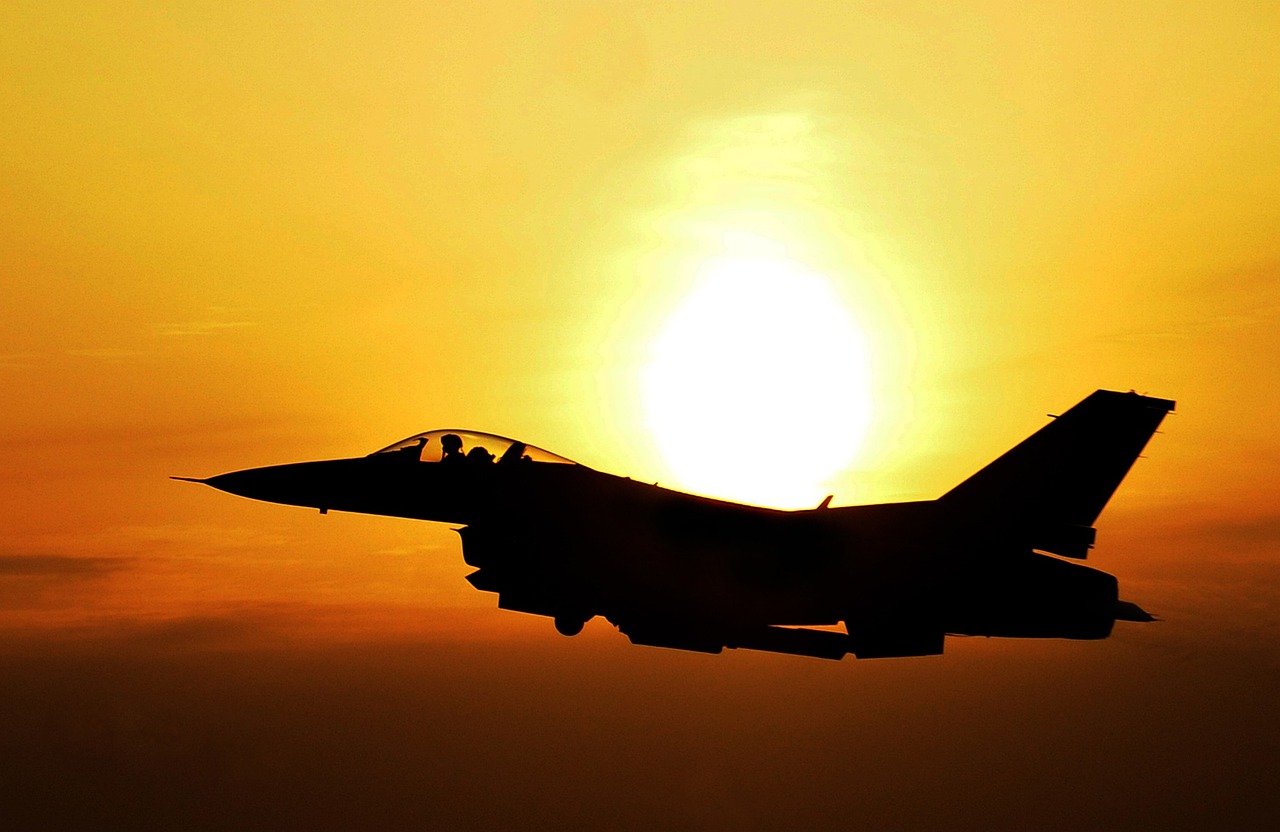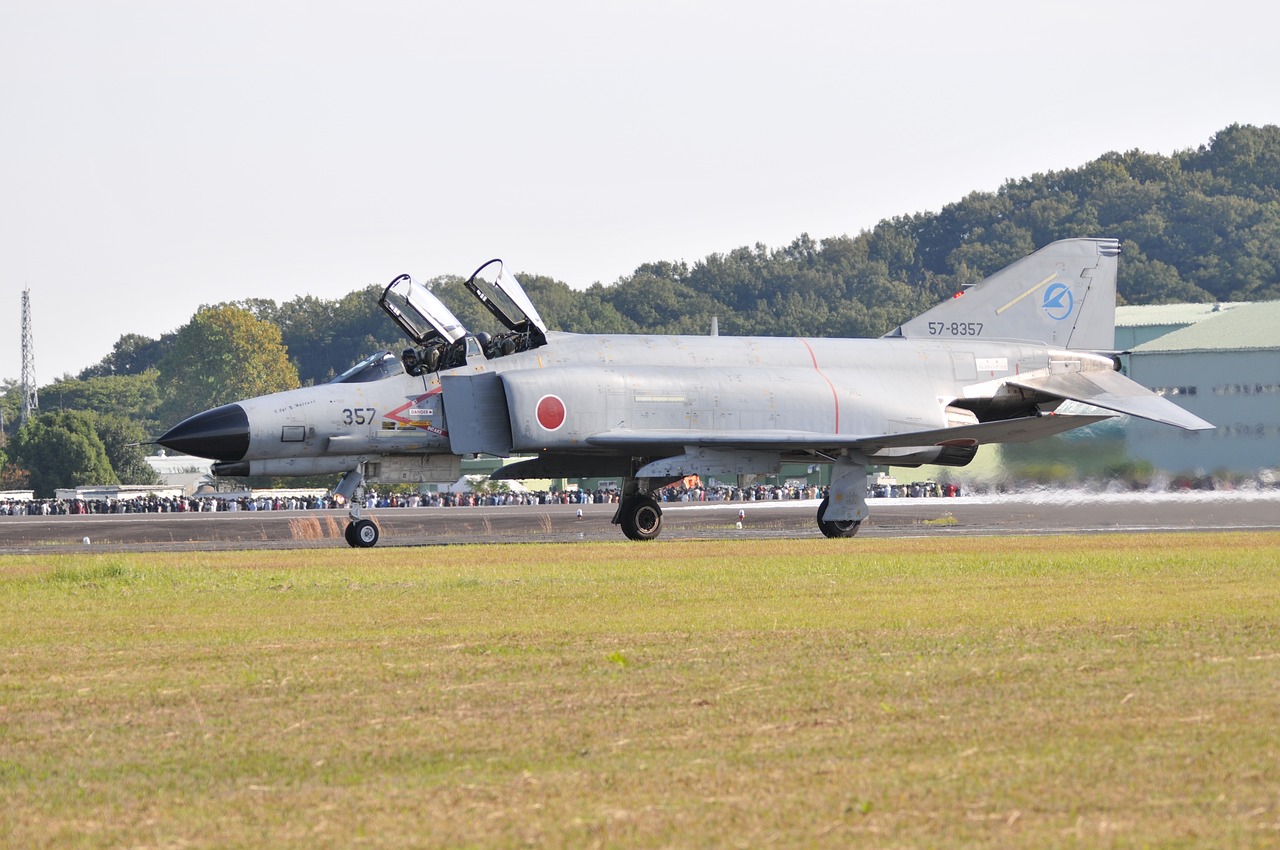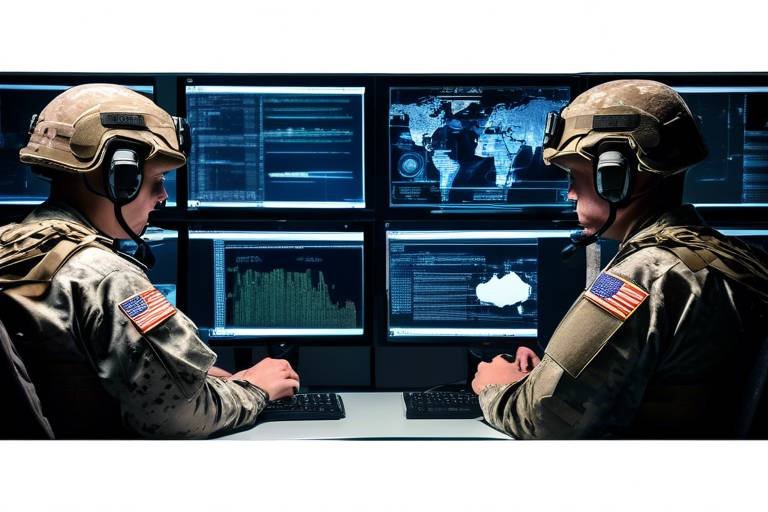How AI is Revolutionizing Weapon Design and Production
In today's rapidly evolving technological landscape, artificial intelligence (AI) stands at the forefront of innovation, particularly in the realm of military technology. The integration of AI into weapon design and production processes is not just a trend; it's a profound transformation that is reshaping how nations approach defense. Imagine a world where weapons are not only designed faster but are also smarter and more efficient, adapting to the dynamic nature of combat. This article delves into the remarkable advancements brought about by AI, the ethical dilemmas it presents, and what the future might hold for military technology.
Artificial intelligence is revolutionizing weapon design by streamlining various aspects of the development cycle. Traditionally, weapon design involved lengthy processes filled with trial and error. However, with AI, designers can enhance simulations, optimize materials, and predict performance outcomes more effectively. This means that the development cycles are not only faster but also more efficient. For instance, AI algorithms can analyze vast amounts of data from previous designs and battlefield scenarios, allowing engineers to create weapons that are not only innovative but also tailored to meet specific operational needs. Think of it as having a supercharged assistant that can sift through mountains of information and provide insights that would take a human team weeks, if not months, to uncover.
The integration of AI enables military strategists to harness data analysis at unprecedented scales. Imagine having access to real-time battlefield data and predictive analytics that inform decision-making processes. This capability significantly enhances operational effectiveness. With AI, commanders can analyze trends and make informed decisions that could mean the difference between victory and defeat. For example, AI can process historical data on enemy movements, weather patterns, and logistical support to provide strategic recommendations. This data-driven approach allows for a level of precision and foresight that was previously unimaginable.
At the heart of this data-driven revolution are machine learning algorithms. These algorithms are employed to analyze vast datasets, identifying patterns and trends that inform the design of more effective and adaptable weapon systems. This means that weapons can be developed with specific combat scenarios in mind, making them more versatile and effective in the field. For instance, a machine learning model can analyze data from various combat situations, learning from each encounter to suggest modifications to existing designs or propose entirely new systems. This continuous learning process ensures that military technologies evolve in tandem with the complexities of modern warfare.
Another critical application of AI in weapon systems is predictive maintenance. This technology forecasts potential failures and schedules timely repairs, ensuring that weapon systems remain operational when needed most. Imagine a scenario where a critical piece of military hardware is about to fail, but AI predicts the issue days in advance, allowing for repairs before it becomes a problem. This significantly reduces downtime and enhances overall readiness, ensuring that military forces are always prepared for action.
Moreover, AI is optimizing supply chains for weapon production. By improving logistics, inventory management, and resource allocation, AI technologies help reduce costs and increase efficiency in manufacturing processes. For example, AI can analyze supply chain data to predict shortages or delays, enabling manufacturers to adjust their production schedules proactively. This level of optimization not only saves money but also ensures that military forces have the necessary equipment and supplies when they need them.
Automated testing powered by AI is another game-changer in the validation of weapon systems. This technology accelerates the testing process, ensuring that weapons meet rigorous safety and performance standards while minimizing human error and resource expenditure. Imagine a scenario where a new weapon system undergoes testing, and AI algorithms can quickly analyze the results, identifying any issues that need to be addressed. This rapid feedback loop allows for quicker iterations and improvements, resulting in a more reliable final product.
However, the use of AI in weapon design is not without its challenges. It raises critical ethical questions regarding accountability, decision-making in combat scenarios, and the potential for autonomous systems to operate without human intervention. The prospect of machines making life-and-death decisions is a troubling one, prompting a need for robust discussions about the moral implications of AI in warfare.
As AI technology advances, regulatory frameworks struggle to keep pace. This necessitates urgent discussions around policies that govern the development and deployment of AI-driven weaponry. How do we ensure responsible use of these powerful technologies? What safeguards are necessary to prevent misuse? These questions need to be addressed as we navigate the complexities of modern military technology.
Public perception of AI in weaponry is mixed. On one hand, there are concerns about safety and ethical implications; on the other hand, there are perceived benefits of enhanced military capabilities and national security. The challenge lies in balancing these perspectives and fostering a dialogue that considers both the potential advantages and the risks associated with AI in weapon design.
- What is the role of AI in modern weapon design? AI enhances the design process by streamlining simulations, optimizing materials, and predicting performance outcomes.
- How does AI improve military decision-making? AI allows for data analysis at unprecedented scales, enabling informed decisions based on predictive analytics and real-time data.
- What are the ethical concerns surrounding AI in weaponry? Ethical questions include accountability in combat scenarios and the implications of autonomous systems operating without human intervention.
- Can AI help reduce military costs? Yes, AI optimizes supply chains and resource allocation, leading to reduced costs and increased efficiency in manufacturing processes.

AI in Design Processes
This article explores the transformative impact of artificial intelligence on weapon design and production processes, highlighting advancements, ethical considerations, and future implications for military technology.
Artificial intelligence is not just a buzzword; it's a game changer in the world of weapon design. Imagine a scenario where engineers can create weapon systems faster and more efficiently than ever before. Sounds like science fiction, right? Well, it’s becoming a reality! AI enhances simulations, optimizes materials, and predicts performance outcomes, which leads to quicker development cycles compared to traditional methods. This isn’t just about speed; it’s about precision and effectiveness. With AI, designers can run complex simulations that take into account countless variables, allowing them to see how a weapon will perform under various conditions before it’s even built.
For instance, AI algorithms can analyze the structural integrity of different materials under simulated combat conditions. This means that engineers can select the most effective materials for durability and performance, ensuring that the final product is not only effective but also reliable. It’s like having a crystal ball that tells you which design will withstand the test of time and battle. The result? A weapon that is not just designed but is engineered for excellence.
Furthermore, AI can assist in creating modular designs that can be easily adapted for different missions. This adaptability is crucial in modern warfare, where the battlefield is constantly changing. With AI, designers can quickly tweak designs based on real-time data and feedback, ensuring that the weapon systems are always one step ahead of potential threats. This level of responsiveness is unprecedented and allows military forces to maintain a strategic advantage.
Moreover, the integration of AI in the design process also fosters collaboration. Engineers, data scientists, and military strategists can work together seamlessly, sharing insights and data that enhance the overall design. This collaborative environment is akin to a well-oiled machine, where every part works in harmony to produce a superior product. The synergy created by AI leads to innovative solutions that were previously unimaginable.
In summary, the infusion of AI into weapon design processes is not just about making things faster; it’s about making them smarter. With enhanced simulations, optimized materials, and a collaborative approach, the future of weapon design looks promising. As we continue to harness the power of AI, the possibilities are endless, paving the way for a new era in military technology.
- What are the main benefits of using AI in weapon design? AI enhances the efficiency and effectiveness of the design process by enabling faster simulations, optimizing materials, and allowing for real-time adjustments based on data analysis.
- How does AI improve the reliability of weapons? By predicting performance outcomes and analyzing materials under various conditions, AI helps ensure that the final weapon systems are durable and effective in combat scenarios.
- Can AI adapt weapon designs for different missions? Yes, AI allows for modular designs that can be quickly modified based on real-time data and battlefield requirements, ensuring adaptability in changing environments.

Data-Driven Decision Making
In the fast-paced world of modern warfare, the ability to make quick and informed decisions can mean the difference between victory and defeat. Enter the realm of artificial intelligence (AI), which has become a game-changer in how military strategists approach decision-making processes. By leveraging vast amounts of data collected from various sources, AI enables military leaders to analyze and interpret information at an unprecedented scale. This capability allows for a level of predictive analytics that was once the stuff of science fiction.
Imagine a battlefield where every move is calculated, and every piece of intelligence is analyzed in real-time. AI systems can process data from satellite imagery, drone surveillance, and even social media feeds to create a comprehensive picture of the operational environment. This means that military strategists can make decisions based on real-time battlefield data, rather than relying solely on intuition or outdated information. The result? Enhanced operational effectiveness that can dramatically improve mission outcomes.
One of the most exciting aspects of AI in decision-making is its ability to identify patterns and trends that might not be immediately apparent to human analysts. For instance, machine learning algorithms can sift through historical combat data to uncover insights about enemy behavior, weapon effectiveness, and environmental factors that impact engagements. By recognizing these patterns, military leaders can tailor their strategies to specific combat scenarios, ensuring that their forces are always one step ahead of the competition.
Moreover, the integration of AI into decision-making processes is not just about enhancing military tactics; it also plays a crucial role in resource allocation. AI systems can analyze logistical data to ensure that troops have the supplies they need when they need them. This data-driven approach allows for efficient resource management, minimizing waste and ensuring that every asset is utilized to its fullest potential.
However, while the benefits of data-driven decision-making are clear, it's essential to recognize that this technology also comes with its challenges. As military organizations increasingly rely on AI for critical decisions, questions about accountability and transparency arise. Who is responsible when an AI system makes a mistake? How do we ensure that these systems are making ethical decisions in high-stakes environments? These are questions that military leaders and policymakers must grapple with as they navigate the complexities of AI in warfare.
In summary, data-driven decision-making powered by AI represents a significant leap forward in military strategy. By harnessing the power of data analytics, military leaders can make informed decisions that enhance operational effectiveness, optimize resource allocation, and stay ahead of adversaries. As we look to the future, the challenge will be to balance these technological advancements with ethical considerations and accountability, ensuring that AI serves as a force for good in the complex landscape of modern warfare.
- What is data-driven decision-making in military contexts?
Data-driven decision-making refers to the process of using data analytics and AI technologies to inform and enhance military strategies and operational decisions. - How does AI improve military decision-making?
AI improves military decision-making by analyzing vast datasets to identify patterns, trends, and insights that inform strategies and enhance operational effectiveness. - What are the ethical concerns surrounding AI in warfare?
Ethical concerns include accountability for AI decisions, potential biases in AI algorithms, and the implications of autonomous systems operating without human intervention. - Can AI replace human decision-making in military operations?
While AI can enhance decision-making, it is unlikely to replace human judgment entirely. The combination of human intuition and AI analytics is seen as the most effective approach.

Machine Learning Algorithms
In the ever-evolving landscape of military technology, are becoming the backbone of modern weapon design. These algorithms are not just tools; they are the engines driving innovation and efficiency. Imagine a vast ocean of data, teeming with information about past conflicts, weapon performance, and battlefield conditions. Machine learning acts like a skilled navigator, sifting through this data to uncover hidden patterns and insights that human analysts might overlook. This capability is crucial for developing weapon systems that are not only effective but also adaptable to various combat scenarios.
One of the most exciting aspects of machine learning in weapon design is its ability to predict outcomes. By analyzing historical data, these algorithms can forecast how a weapon will perform under different conditions. For instance, consider a new missile system being developed. By feeding the algorithm data from previous missile tests, it can determine the optimal launch angles, speeds, and even environmental conditions that would maximize its effectiveness. This predictive capability significantly reduces the time and resources spent on trial-and-error testing.
Furthermore, machine learning algorithms can continuously learn and improve. As new data comes in from ongoing military operations or testing phases, these algorithms adapt and refine their predictions. This means that the weapon systems are not static; they evolve in real-time, becoming more efficient and effective as they gather more operational feedback. In a world where military engagements can change in the blink of an eye, this adaptability is invaluable.
To illustrate the impact of machine learning algorithms on weapon design, consider the following table:
| Aspect | Traditional Methods | With Machine Learning |
|---|---|---|
| Data Analysis | Manual, time-consuming | Automated, real-time |
| Outcome Prediction | Based on limited scenarios | Dynamic, based on vast datasets |
| Adaptability | Static design | Continuous improvement |
| Resource Efficiency | High resource consumption | Optimized resource allocation |
Additionally, the use of machine learning algorithms facilitates the creation of more customized weapon systems. By analyzing specific combat scenarios, these algorithms help in designing weapons tailored to meet the unique demands of each situation. For example, a weapon system intended for urban warfare might require different specifications compared to one designed for open-field combat. Machine learning enables designers to create systems that can be fine-tuned for various environments, enhancing their overall effectiveness.
However, as we embrace these technological advancements, we must also consider the challenges they bring. The reliance on algorithms raises questions about transparency and accountability. If an autonomous weapon makes a decision based on machine learning, who is responsible for that decision? These questions highlight the need for robust ethical guidelines and regulatory frameworks to govern the use of AI in military applications.
In conclusion, machine learning algorithms are revolutionizing weapon design by providing unprecedented insights and adaptability. As we continue to harness this technology, it’s essential to navigate the accompanying ethical landscape thoughtfully. The future of military technology is not just about creating more powerful weapons; it’s about creating smarter, more responsible systems that can operate effectively in an increasingly complex world.
- What are machine learning algorithms? Machine learning algorithms are computer programs that analyze data, learn from it, and make predictions or decisions based on that information.
- How do machine learning algorithms improve weapon design? They analyze vast datasets to identify patterns, predict outcomes, and adapt weapon systems for specific combat scenarios, leading to more effective designs.
- What are the ethical concerns surrounding AI in weapon design? Ethical concerns include accountability for decisions made by autonomous systems, the potential for misuse, and the implications of reduced human oversight in military operations.
- Can machine learning algorithms operate without human intervention? While they can automate many processes, human oversight is crucial to ensure ethical decision-making and accountability in military applications.

Predictive Maintenance
This article explores the transformative impact of artificial intelligence on weapon design and production processes, highlighting advancements, ethical considerations, and future implications for military technology.
Artificial intelligence is streamlining weapon design by enhancing simulations, optimizing materials, and predicting performance outcomes, resulting in faster and more efficient development cycles compared to traditional methods.
The integration of AI allows for data analysis at unprecedented scales, enabling military strategists to make informed decisions based on predictive analytics and real-time battlefield data, ultimately improving operational effectiveness.
Machine learning algorithms are being employed to analyze vast datasets, identifying patterns and trends that inform the design of more effective and adaptable weapon systems tailored to specific combat scenarios.
Predictive maintenance is a game-changer in the realm of military weaponry. Imagine a scenario where a soldier can trust that their weapon will perform flawlessly when needed, without the nagging worry of mechanical failure. This is made possible through the use of AI-driven predictive maintenance systems that leverage data analytics to forecast potential failures before they occur. By continuously monitoring various components of weapon systems, AI can analyze performance metrics and environmental factors, allowing for timely interventions.
For instance, consider a fighter jet equipped with sensors that track engine performance. If an anomaly is detected, the system can alert maintenance crews to inspect the engine before it results in a failure during a critical mission. This proactive approach not only enhances operational readiness but also significantly reduces the costs associated with emergency repairs and unscheduled maintenance. The benefits of predictive maintenance can be summarized as follows:
- Increased Reliability: Weapons are less likely to fail in the field, ensuring that military personnel can depend on their equipment.
- Cost Efficiency: By preventing failures, military organizations can save on costly repair bills and extend the lifespan of their equipment.
- Enhanced Safety: Reducing the risk of malfunction contributes to the safety of personnel during operations.
Moreover, the integration of AI in predictive maintenance fosters a culture of continuous improvement. As data is collected and analyzed over time, algorithms can learn from historical performance, leading to increasingly accurate predictions. This iterative process ensures that weapon systems are not just maintained but are continually optimized for peak performance.
Automated testing powered by AI accelerates the validation of weapon systems, ensuring they meet rigorous safety and performance standards while minimizing human error and resource expenditure.
The use of AI in weapon design raises critical ethical questions regarding accountability, decision-making in combat scenarios, and the potential for autonomous systems to operate without human intervention.
As AI technology advances, regulatory frameworks struggle to keep pace, necessitating discussions around policies that govern the development and deployment of AI-driven weaponry to ensure responsible use.
Public perception of AI in weaponry is mixed, with concerns about safety and ethical implications often clashing with the perceived benefits of enhanced military capabilities and national security.
- What is predictive maintenance in weapon systems?
Predictive maintenance involves using AI and data analytics to forecast potential failures in weapon systems, allowing for timely repairs and reducing unexpected downtimes.
- How does AI improve weapon design?
AI enhances weapon design by optimizing simulations, materials, and performance predictions, resulting in faster development cycles and more effective systems.
- What are the ethical concerns surrounding AI in military applications?
Ethical concerns include accountability for autonomous decisions, the potential for misuse, and the implications of machines making life-and-death choices without human oversight.

Supply Chain Optimization
In the ever-evolving landscape of military technology, AI-driven supply chain optimization is emerging as a game-changer. The traditional supply chain processes, often bogged down by inefficiencies and delays, are being transformed into streamlined systems that enhance operational readiness and reduce costs. Imagine a scenario where every component needed for weapon production is accounted for in real time, where logistics are fine-tuned to ensure that materials arrive precisely when needed. This is the reality that AI is helping to create.
By leveraging advanced algorithms and machine learning, military organizations can now analyze vast amounts of data related to inventory levels, supplier performance, and demand forecasts. For instance, AI can predict which materials will be needed in the near future based on current production rates and historical data. This predictive capability not only minimizes waste but also ensures that production lines remain active and efficient. When you think about it, it’s like having a personal assistant who not only knows what you need but also when and how much of it you need!
Furthermore, AI systems can optimize logistics by determining the most efficient routes for transporting materials. This can significantly reduce delivery times and costs. For example, a recent study showed that AI-optimized routes for military logistics cut transportation costs by up to 20% while also decreasing delivery times by as much as 30%. These improvements can mean the difference between having the right resources at the right time and facing delays that hinder mission success.
Moreover, the integration of AI in supply chain management leads to enhanced collaboration among various stakeholders. Suppliers, manufacturers, and military strategists can share data seamlessly, enabling a more cohesive approach to production and logistics. This collaboration is vital for ensuring that all parties are on the same page, reducing the likelihood of miscommunication and errors. In essence, AI acts as a bridge that connects different components of the supply chain, fostering a more integrated and responsive system.
As we look to the future, the implications of AI in supply chain optimization are profound. The ability to respond swiftly to changing demands and unforeseen challenges will position military organizations to maintain a competitive edge. However, it’s essential to acknowledge that while AI offers tremendous benefits, it also requires careful implementation and oversight to ensure that these systems operate effectively and ethically.
- What is AI supply chain optimization?
AI supply chain optimization refers to the use of artificial intelligence technologies to enhance the efficiency and effectiveness of supply chain processes, including logistics, inventory management, and resource allocation. - How does AI improve logistics in weapon production?
AI improves logistics by analyzing data to determine the most efficient transportation routes, predicting material needs, and ensuring timely deliveries, which ultimately reduces costs and enhances operational readiness. - What are the potential challenges of AI in supply chain management?
Challenges include the need for robust data security, potential biases in AI algorithms, and the necessity for regulatory frameworks to manage the ethical implications of AI usage in military contexts. - Can AI completely replace human decision-making in supply chain processes?
No, while AI can enhance decision-making by providing data-driven insights, human oversight remains crucial to ensure ethical considerations and strategic judgment are applied.

Automated Testing and Validation
In the fast-paced world of military technology, powered by artificial intelligence is emerging as a game changer. Imagine a scenario where weapon systems are rigorously tested without the need for extensive human intervention. This is not science fiction; it’s the reality of how AI is reshaping the landscape of weapon development. With the ability to simulate various combat scenarios and environmental conditions, AI can ensure that each weapon system meets the highest safety and performance standards before it ever reaches the battlefield.
One of the most significant advantages of automated testing is the speed at which it can operate. Traditional testing methods often involve a lengthy process of manual checks and human oversight, which can delay the deployment of critical systems. In contrast, AI-driven testing can run simulations continuously, analyzing performance metrics in real-time and providing immediate feedback. This not only accelerates the development cycle but also enhances the reliability of the systems being tested. For instance, AI can quickly identify potential flaws in weapon designs, allowing engineers to make adjustments early in the process, thereby saving both time and resources.
Furthermore, the integration of AI into testing protocols minimizes the risk of human error. Humans, while skilled, can be prone to fatigue and oversight, especially in high-stakes environments. AI, however, operates with consistent accuracy, ensuring that every test is performed under the same conditions and parameters. This level of precision is crucial when it comes to weapon systems, where even the slightest deviation can lead to catastrophic outcomes. With AI handling the bulk of the testing, human experts can focus on more complex problem-solving tasks, enhancing overall efficiency and effectiveness.
To illustrate the impact of automated testing, consider the following table that outlines key benefits:
| Benefit | Description |
|---|---|
| Speed | Accelerates the testing process, reducing time to deployment. |
| Accuracy | Minimizes human error, ensuring consistent testing conditions. |
| Cost Efficiency | Reduces resource expenditure by identifying issues early in development. |
| Real-time Feedback | Provides immediate insights into performance, allowing for quick adjustments. |
However, while the advantages of automated testing are clear, it’s essential to recognize that this technology is not without its challenges. The reliance on AI systems raises questions about the accountability of outcomes. If a weapon system fails during a mission due to a flaw that went undetected during automated testing, who is responsible? This question highlights the need for robust oversight and regulatory frameworks to ensure that AI-driven testing is conducted ethically and responsibly.
- What is automated testing in weapon design?
Automated testing refers to the use of AI technologies to evaluate weapon systems' performance and safety without extensive human intervention, allowing for quicker and more reliable assessments. - How does AI improve testing accuracy?
AI improves testing accuracy by eliminating human error and maintaining consistent testing parameters, ensuring that each test is conducted under the same conditions. - What are the ethical concerns surrounding automated testing?
Ethical concerns include accountability for failures, the potential for biased algorithms, and the need for appropriate regulatory oversight to ensure responsible use of AI in military applications.

Ethical Implications
The integration of artificial intelligence (AI) into weapon design and production is not just a technological advancement; it raises profound that society must grapple with. As we stand on the brink of a new era in military technology, questions about accountability, the moral responsibility of AI systems, and the potential consequences of autonomous weaponry loom larger than ever. Imagine a scenario where a machine makes life-and-death decisions on the battlefield without human intervention—this is no longer science fiction but a tangible reality that demands our attention.
One of the most pressing issues is accountability. In traditional warfare, when a weapon causes unintended harm, it’s relatively straightforward to assign responsibility to the human operators or military leaders. However, with AI systems capable of making independent decisions, who is to blame when things go awry? Is it the programmer, the military institution, or the AI itself? This ambiguity can lead to a dangerous lack of accountability, potentially resulting in a scenario where no one is held responsible for catastrophic outcomes.
Moreover, the ethical dilemma extends to decision-making in combat scenarios. AI systems are designed to analyze vast amounts of data and make quick decisions, which can be beneficial in high-stakes environments. However, the question remains: can a machine truly understand the complexities of human life and the moral implications of its actions? A machine lacks empathy, and its decisions are based purely on algorithms and data, devoid of the nuanced understanding that a human operator might possess.
Additionally, there are concerns about the potential for AI-driven weapons to operate without human oversight. The concept of autonomous weapons raises alarms about the possibility of machines engaging in warfare based on their programmed objectives, which may not align with humanitarian laws or ethical standards. These systems could potentially misinterpret data or be manipulated, leading to unintended escalations in conflict.
As we advance into this new frontier, the need for robust regulatory frameworks becomes crucial. Policymakers face the challenge of creating guidelines that govern the development and deployment of AI-driven weaponry. Such regulations must ensure responsible use while also addressing the rapid pace of technological advancement. This requires an ongoing dialogue among technologists, ethicists, military leaders, and lawmakers to establish norms and standards that prioritize human life and ethical considerations.
Public perception of AI in weaponry is also a significant factor that cannot be overlooked. While some view these advancements as necessary for national security, others raise concerns about safety and the ethical implications of automated warfare. The dichotomy in public opinion often leads to heated debates, emphasizing the need for transparency in how AI technologies are developed and deployed. Engaging the public in discussions about the implications of AI in military contexts is essential to foster trust and understanding.
In conclusion, the ethical implications of AI in weapon design and production are vast and complex. As we continue to innovate and integrate these technologies into our military frameworks, it is imperative that we address the moral responsibilities that come with such power. The future of warfare may depend on our ability to navigate these ethical waters, ensuring that advancements in technology do not come at the cost of our humanity.
- What are the main ethical concerns regarding AI in weaponry?
The primary concerns include accountability, decision-making in combat, and the potential for autonomous systems to operate without human oversight. - How can we ensure accountability in AI-driven weapons?
Developing clear regulatory frameworks and guidelines that define responsibility and oversight is crucial for accountability in AI weapon systems. - What role does public perception play in the use of AI in military technology?
Public perception influences policy decisions and the development of AI technologies, making it essential to engage the public in discussions about ethical implications.

Regulatory Challenges
As artificial intelligence (AI) continues to evolve and integrate into weapon design and production, it brings with it a host of that governments and international bodies must navigate. The rapid pace of AI development often outstrips existing laws and regulations, creating a landscape where accountability and oversight are increasingly difficult to maintain. For instance, traditional military regulations were designed for human-operated systems, leaving a gap when it comes to autonomous weaponry that can make decisions without human intervention.
One of the most pressing issues is the lack of clear guidelines on how AI systems should be tested and validated before deployment. Unlike conventional weapons, which have established protocols for safety and performance, AI-driven systems require new standards that take into account their unique capabilities and potential risks. This has led to a patchwork of regulations that vary significantly from one jurisdiction to another, complicating international military cooperation and arms control agreements.
Moreover, the ethical implications of AI in warfare raise questions about responsibility and liability. If an AI-controlled weapon system causes unintended harm, who is held accountable? The manufacturer, the military, or the AI itself? These questions are not just academic; they have real-world implications that could affect military operations and international relations. As nations grapple with these issues, the need for a cohesive regulatory framework becomes increasingly urgent.
To illustrate the complexity of these regulatory challenges, consider the following table that outlines key areas where regulations are lagging:
| Regulatory Area | Current Status | Challenges |
|---|---|---|
| Testing and Validation | Inconsistent standards | Lack of agreed-upon metrics for AI performance |
| Accountability | Undefined | Determining liability in case of malfunction |
| International Cooperation | Fragmented | Varying regulations across countries |
| Ethical Guidelines | Emerging | Balancing military effectiveness with moral considerations |
In addition to these challenges, there is a need for ongoing dialogue among stakeholders, including governments, military leaders, ethicists, and the public. This dialogue is essential for developing comprehensive policies that not only address the technical aspects of AI in weaponry but also consider the broader implications for society. As we move forward, it is crucial to strike a balance between leveraging the benefits of AI in military applications while ensuring that ethical standards and accountability measures are firmly in place.
- What are the main regulatory challenges associated with AI in weapon design?
The main challenges include inconsistent testing standards, undefined accountability, fragmented international regulations, and emerging ethical guidelines. - Why is accountability a significant concern with AI-driven weapon systems?
Accountability is crucial because it determines who is responsible for decisions made by autonomous systems, especially in cases of unintended harm. - How can governments ensure responsible use of AI in military applications?
Governments can ensure responsible use by developing cohesive regulatory frameworks that encompass testing, accountability, and ethical considerations.

Public Perception and Acceptance
The introduction of artificial intelligence into weaponry has sparked a complex dialogue among various stakeholders, ranging from military officials to everyday citizens. As we stand on the precipice of a technological revolution, the public perception of AI in military applications is a mixed bag of excitement, skepticism, and concern. Many people are awed by the potential of AI to enhance national security and military efficiency, but at the same time, there are significant fears regarding the implications of autonomous systems making life-and-death decisions.
One of the primary concerns is the ethical ramifications of allowing machines to make critical decisions in combat scenarios. Imagine a world where a drone can decide to take out a target without human oversight. This scenario raises chilling questions about accountability. Who is responsible if an AI miscalculates and harms civilians? The line between military necessity and moral responsibility becomes dangerously blurred.
Moreover, the fear of losing human control over warfare is palpable. Many people view AI as a double-edged sword; while it can potentially reduce human casualties by taking soldiers out of harm's way, it also opens the door to unintended consequences. The idea of machines executing complex military strategies without human intervention feels unsettling. To many, it seems like the plot of a science fiction thriller, yet it is becoming a reality.
Public acceptance is also influenced by the media portrayal of AI in warfare. News stories often highlight the thrilling capabilities of AI, showcasing its potential to revolutionize military operations. However, these narratives can overshadow serious discussions about the ethical implications and potential risks involved. A balanced perspective is crucial, yet it often gets lost in the sensationalism that surrounds technological advancements.
Furthermore, there is a generational divide in how different age groups perceive AI in weaponry. Younger generations, who have grown up with technology, may be more accepting of AI's role in military applications, viewing it as a necessary evolution for national defense. In contrast, older generations might be more cautious, recalling historical instances where technology has been misused. This discrepancy can lead to a lack of consensus on how AI should be integrated into military strategy.
To better understand the public's stance, several surveys have been conducted, revealing a spectrum of opinions. For instance, a recent survey indicated that:
| Opinion | Percentage |
|---|---|
| Support for AI in military applications | 45% |
| Concern over ethical implications | 35% |
| Unsure or neutral | 20% |
This table illustrates that while there is a significant portion of the population that supports AI's integration into military operations, a considerable number of individuals harbor concerns about the ethical implications. The challenge lies in bridging this gap and fostering a dialogue that addresses these fears while highlighting the potential benefits of AI.
In conclusion, the public perception of AI in weaponry is a multifaceted issue that requires careful consideration. As the technology continues to evolve, so too must the conversations surrounding its ethical use, accountability, and the role of human oversight. Only through open dialogue can we hope to achieve a consensus that balances innovation with responsibility.
- What are the main concerns regarding AI in weaponry? Many people worry about the ethical implications, accountability, and the potential for machines to make life-and-death decisions without human oversight.
- How does public perception vary among different age groups? Younger generations may be more accepting of AI in military applications, while older generations might be more cautious due to historical misuse of technology.
- What percentage of people support AI in military applications? A recent survey indicated that approximately 45% of the population supports AI's integration into military operations.
- How can we address public concerns about AI in weaponry? Open dialogue, transparency, and ethical discussions are essential to address public concerns and foster trust in AI technologies.
Frequently Asked Questions
- How is AI changing the design process of weapons?
AI is revolutionizing the weapon design process by streamlining simulations, optimizing materials, and predicting performance outcomes. This leads to faster development cycles and more efficient designs compared to traditional methods.
- What role does data play in military decision-making with AI?
Data is crucial in military decision-making as AI allows for real-time analysis of vast datasets. This enables strategists to make informed decisions based on predictive analytics, enhancing operational effectiveness on the battlefield.
- How do machine learning algorithms contribute to weapon design?
Machine learning algorithms analyze extensive datasets to identify patterns and trends. This information helps in designing more effective and adaptable weapon systems that cater to specific combat scenarios.
- What is predictive maintenance in the context of weapon systems?
Predictive maintenance uses AI to forecast potential failures in weapon systems. By scheduling timely repairs, it ensures that these systems remain operational, significantly reducing downtime and improving readiness.
- How does AI optimize supply chains for weapon production?
AI enhances supply chain management by improving logistics, inventory management, and resource allocation. This results in reduced costs and increased efficiency in the manufacturing processes of weaponry.
- What is the significance of automated testing in weapon systems?
Automated testing powered by AI accelerates the validation process of weapon systems. It ensures that these systems meet stringent safety and performance standards while minimizing human error and resource expenditure.
- What ethical concerns arise from using AI in weapon design?
The use of AI in weapon design raises significant ethical questions regarding accountability and decision-making in combat. There's also concern about the potential for autonomous systems operating without human intervention.
- Are there regulatory challenges associated with AI weaponry?
Yes, as AI technology evolves, existing regulatory frameworks often struggle to keep pace. This necessitates ongoing discussions about policies that govern the development and deployment of AI-driven weaponry to ensure responsible usage.
- What is the public perception of AI in military applications?
Public perception of AI in weaponry is mixed. While some people see the benefits of enhanced military capabilities and national security, others express concerns about safety and the ethical implications of AI in combat scenarios.



















